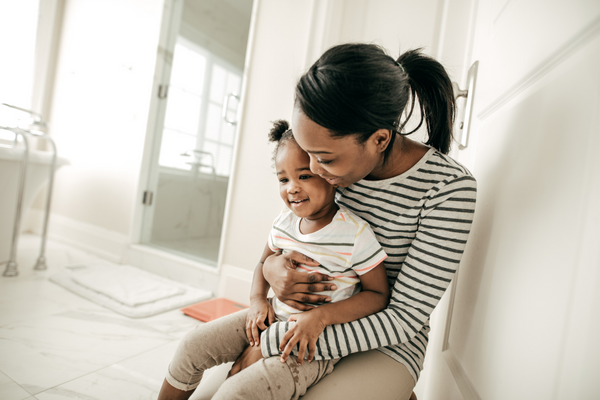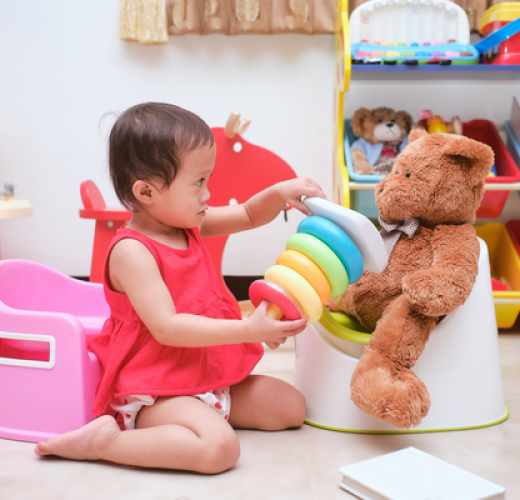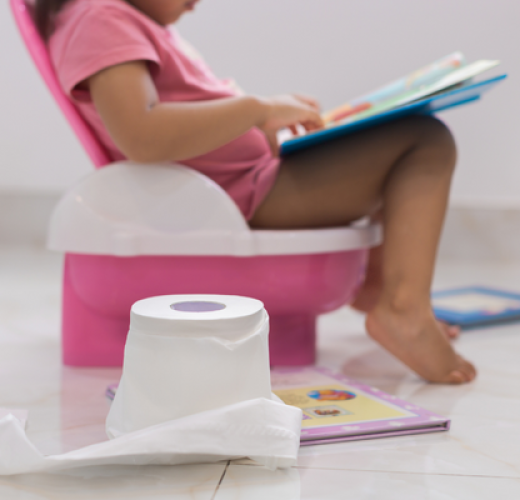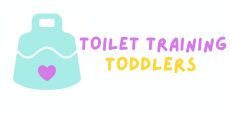Day Training
How To Start Daytime Potty Training
Daytime potty training can be a big milestone for both parents and children.
It’s a process that requires patience, effort, and sometimes a little bit of creativity. But with the right attitude and preparation, potty training can be a fun and rewarding experience for everyone involved.
Let’s get you started with steps and tips on starting daytime potty training with your little one!
Disclaimer: This blog post contains affiliate links . If you use them, we might be rewarded credit or a commission of the sale. Please note that we only recommend tools that we personally use and love and we always have our readers’ best interest at heart.
What is Daytime Potty Training?
Daytime potty training is the process of teaching a child to use the potty or toilet during the day. Most children are ready to start potty training between the ages of 18 months and 3 years old.
It’s an important milestone in a child’s development, and it usually signals the beginning of independence and self-care.
There are a few different potty training methods, but the most important thing is to find what works best for you and your child.
Remember: There’s no single right way to do it – you have to come up with your own!
Some parents prefer to wait until their child shows interest in using the toilet, while others introduce the concept earlier. Some children learn quickly and have few accidents, while others need more time and patience.
This article will help you get started no matter which way you prefer.
What Do You Need To Start Daytime Potty Training?
Before you begin potty training, you must have all the supplies you’ll need on hand.
This includes a toilet seat or potty chair, training pants or underwear, wipes, and a step stool if necessary.
You might also want to have a rewards system in place for your child’s success. This could include stickers, small toys, or a small treat.
How To Potty Train Your Child?
Let’s break down the whole process in simple steps, so you understand better.
1. Talk to your child about potty training
Start by talking to your child about what potty training is and why it’s important. Explain that they will need to use the potty when they feel the urge to pee or poop and that it’s important to try to get to the potty in time.
Let them know that you’re there to help them with this new adventure and that you’ll be cheering them on every step of the way.

2. Start with small steps.
Don’t try to tackle everything at once. Start with baby steps and work your way up.
If your child is resistant to the idea of potty training, start by having them sit on the potty for a few minutes each day with their clothes on. This will help them get used to the sensation of sitting on the potty without any pressure to actually use it.
3. Read your baby's body language.
One of the most important things to remember during potty training is to pay attention to your child’s body language. Physical cues usually indicate when your child needs to go, such as squirming, holding their crotch, or making faces.
If you see these cues, it’s time to head to the potty.
4. Respond to your baby.
When you see the signs that your child needs to use the potty, it’s important to respond quickly. Otherwise, they may already be in the process of having an accident.
If you’re unsure whether your child needs to go, it’s better to err on the side of caution and bring them to the potty or toilet anyway.
5. Guide them to the "act."
Once you’ve reached the potty, it’s time to help your child through the process of doing it.
If your baby is having trouble going, don’t force them. Instead, try to relax and let them take their time.
Use some of the Elimination Communication techniques and words to get them going – they almost always work!
6. Clean up together.
After your child is finished, it’s important to clean up together. Clean them up when they are young; and as they grow with time, teach them how to wipe themselves clean and wash their hands afterwards.
This will help them feel more comfortable with the whole process and make it less daunting.
Plus, it’s a great opportunity to praise them for a well-done job!

7. Praise & Reward.
Whenever your child uses the toilet successfully, be sure to praise them and give them a reward. Use your reward supplies and make them feel appreciated.
It’s important to make a big deal of their successes so they understand they have reached an important milestone towards self-dependence.
The most important thing, however, is to ensure they know that you’re proud of them and that they’re doing a great job.
So, is this it? Not quite!
Be Ready For Setbacks
There will inevitably be setbacks and accidents during potty training. Sometimes your child will be busy playing and not give you any cues. Other times, they may just forget to go.
And, there will surely be “accidents” on the way to the potty.
It’s important to be patient and understanding during these times, as getting angry or frustrated will only make the process harder for both of you.
Instead, try to focus on the positive and praise your child for their successes, no matter how small (even a tiny drop that made it in the potty is still a big win).
If you’re having trouble getting your child to use the potty, or if they seem to be regressing, read the below tips.
Three Tips For Effective Daytime Potty Training
Use positive language:
When talking to your child about potty training, be sure to use positive and encouraging language. Don’t use negative words like “dirty” or “stinky,” as this can make them feel ashamed or embarrassed. Instead, focus on the positive and praise them for their successes.
Using positive language will help them feel more comfortable about the process and make it less daunting.
Make a routine:
Routines are key during potty training. Try to take your child to the bathroom at the same time each day. For instance, some babies feel the urge to go after a nap, while others might go after a meal.
Figure out your child’s potty routine and get them used to the idea of using the potty at that time.
Go at your child's pace:
Don’t push your child to use the potty if they’re not ready. Every child is different and will learn at their own pace.
Trying to force them will only make the process harder and more frustrating for both of you. Be patient and let them lead the way.
So, this is really it – all you need to start daytime potty training with your child! It can be daunting to start daytime potty training with your child, but it doesn’t have to be.
With a little bit of patience and the right approach, you can successfully potty train your child in no time.

